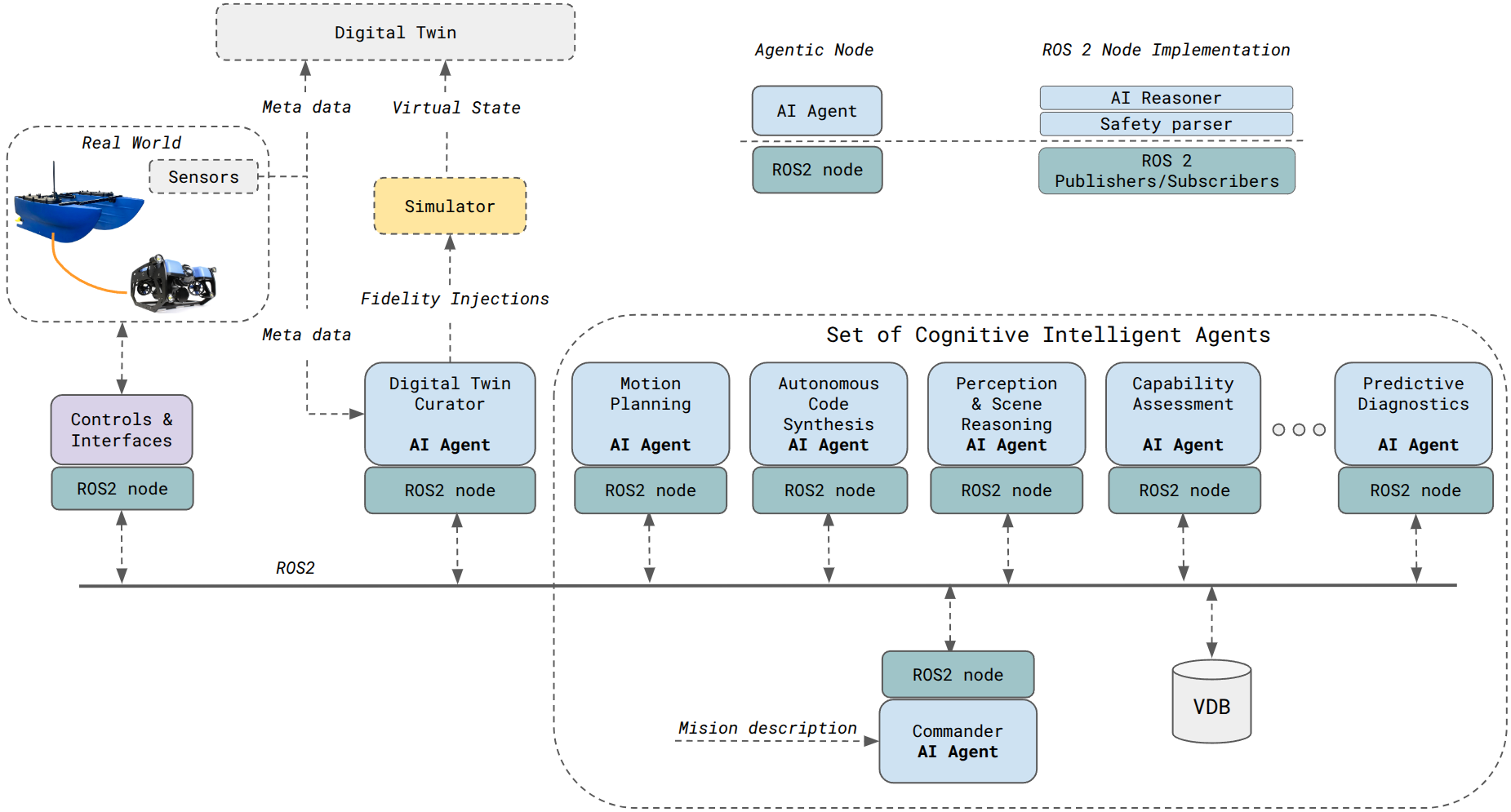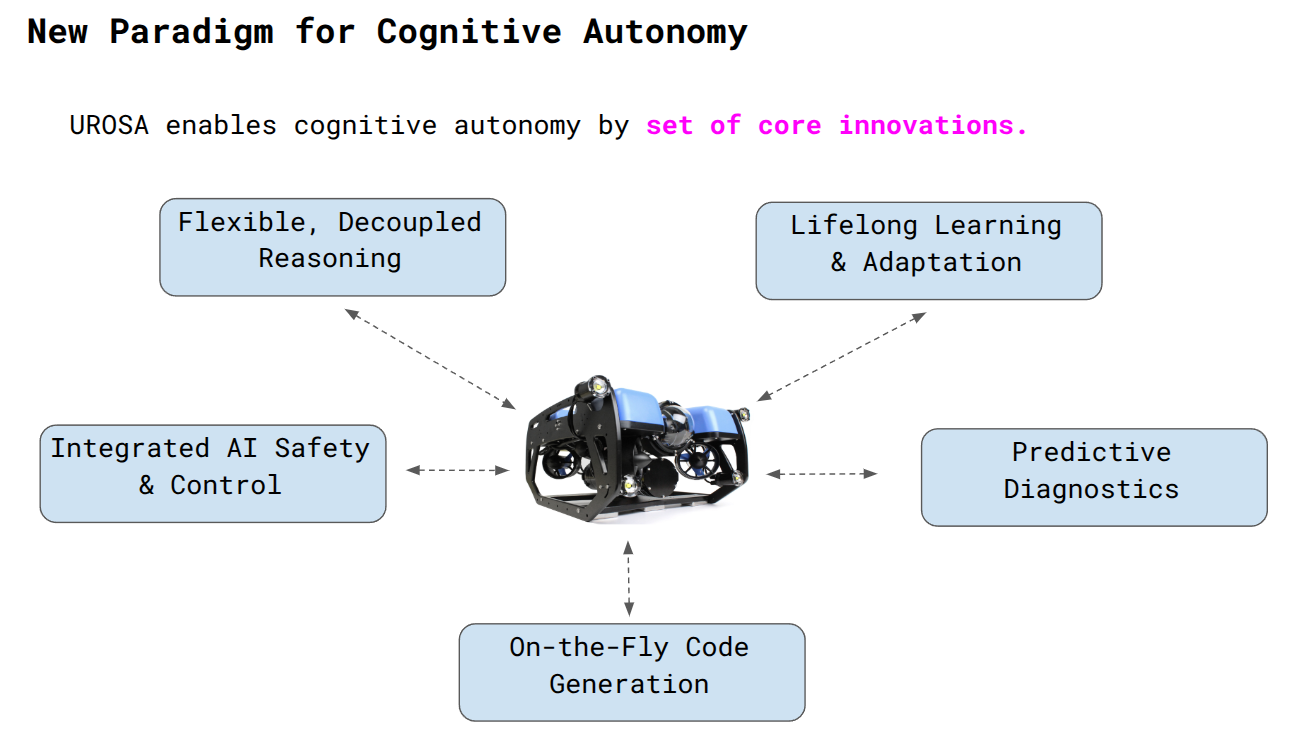
Distributed AI Agents for Cognitive Underwater Robot Autonomy
UROSA (Underwater Robot Self-Organizing Autonomy) is a new software architecture that reimagines robot autonomy. Traditional robots struggle in complex, unpredictable environments like the ocean because they rely on rigid, pre-programmed rules. UROSA replaces this old paradigm with a collaborative team of intelligent AI agents. Each agent is a specialist in a specific area—like perception, planning, or diagnostics—and they work together within the ROS 2 framework to communicate, reason, and make decisions to handle complex underwater missions with minimal human intervention.
System Architecture & Concepts
The UROSA architecture is a distributed cognitive ecosystem. The diagram below illustrates the high-level interaction between the real world, a predictive digital twin, and the core set of intelligent AI agents that perform all reasoning and planning.

Architectural Overview Video
This video provides a narrated walkthrough of the UROSA architecture. It explains the roles of the key AI agents, how real-world sensor data is used to continuously update a physics-based simulator to create a high-fidelity digital twin, and how the distributed cognitive ecosystem works together to achieve complex missions.
Demonstrations & Key Results
UROSA's power comes from a set of key innovations that grant it true cognitive autonomy. Instead of following rigid instructions, the robot can reason and adapt to novel problems as they arise. It learns from experience, using a memory of past missions to continuously improve its performance and resilience. To handle completely unforeseen challenges, it can even generate new skills by autonomously writing, testing, and deploying new software on the fly. Furthermore, the system can predict its own hardware failures before they become critical through advanced diagnostics, all while ensuring every action is verifiable and safe within a multi-layered framework.

Validation of Core Innovations
This video showcases the results from several key validation experiments, demonstrating the practical application of UROSA's core innovations. It includes examples of complex multi-agent coordination, where two AUVs autonomously negotiate a collision-free path; a demonstration of online policy refinement, where a "Teacher" agent instructs a "Student" agent to ignore distractions and focus its reports on specific targets; and a demonstration of the on-the-fly "self-repair" capability, where the system autonomously writes and deploys new software to recover from a simulated critical sensor failure.
Citation
If you use UROSA in your research, please cite our paper:
@misc{buchholz2025urosa,
title = {Distributed AI Agents for Cognitive Underwater Robot Autonomy},
author = {Markus Buchholz and Ignacio Carlucho and Michele Grimaldi and Yvan R. Petillot},
year = {2025},
eprint = {2507.14099},
archivePrefix = {arXiv},
primaryClass = {cs.RO},
note = {Under review at the IEEE Journal of Oceanic Engineering.},
code = {https://github.com/markusbuchholz/urosa_underwater_autonomy},
url = {https://arxiv.org/abs/2507.23735}
}